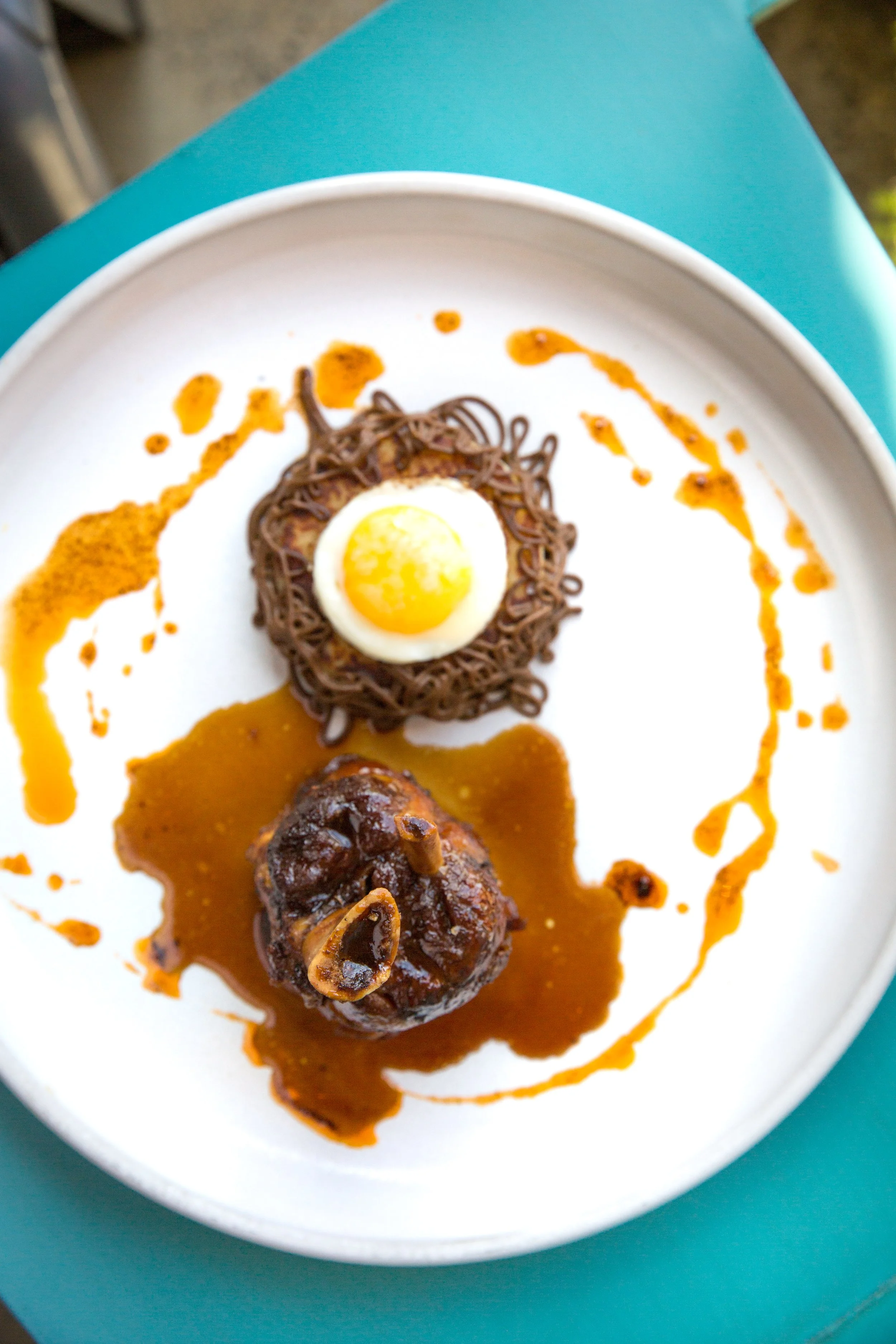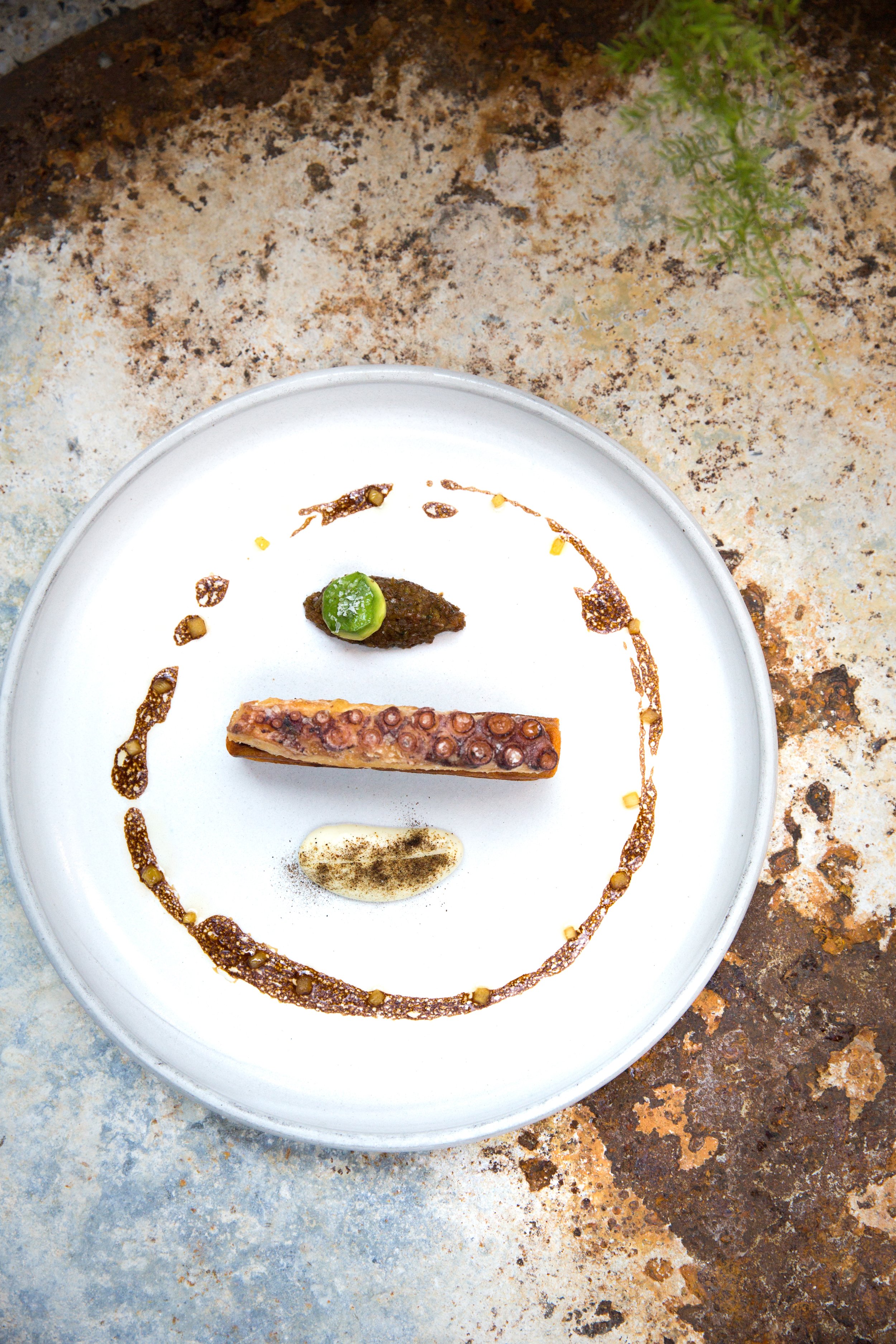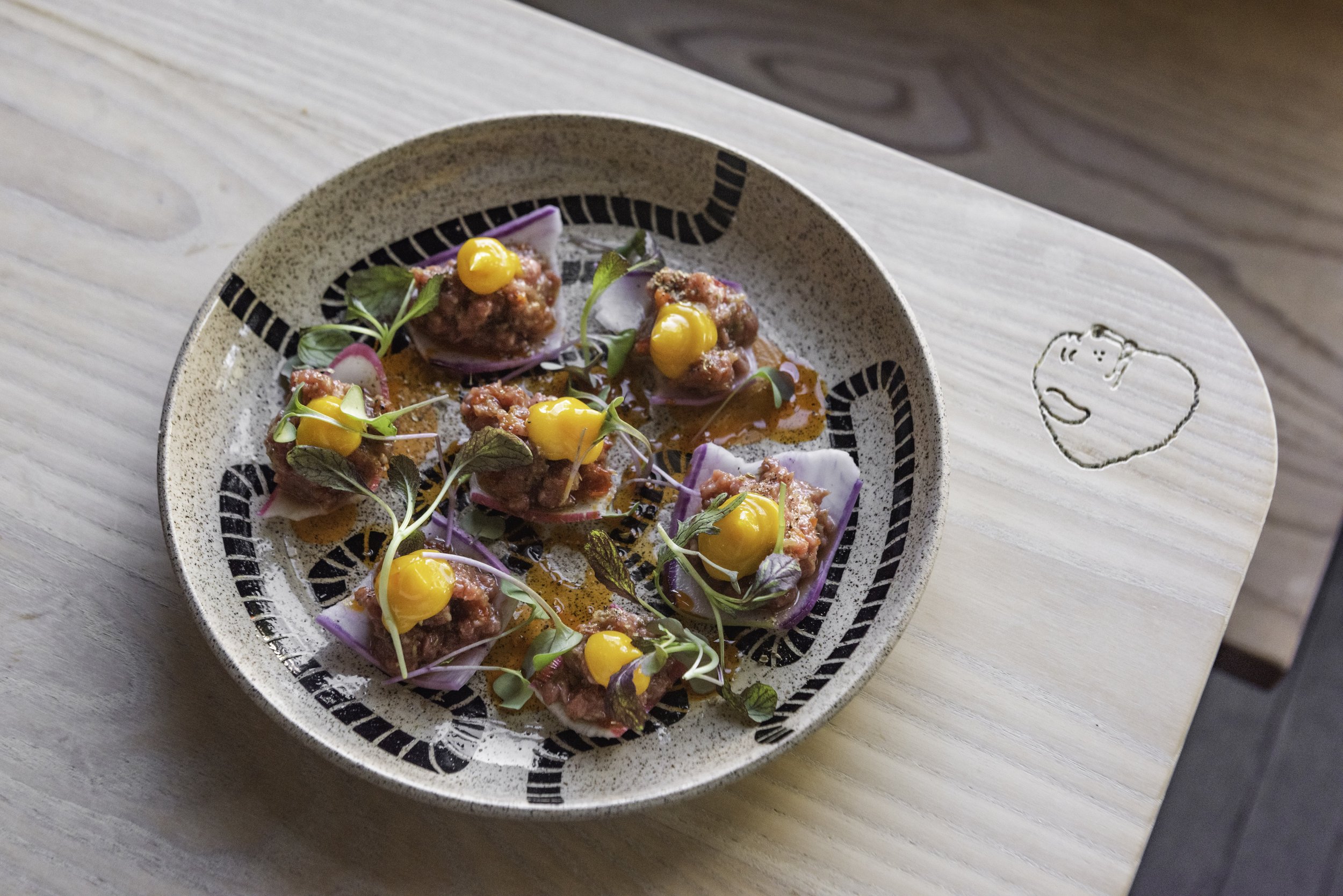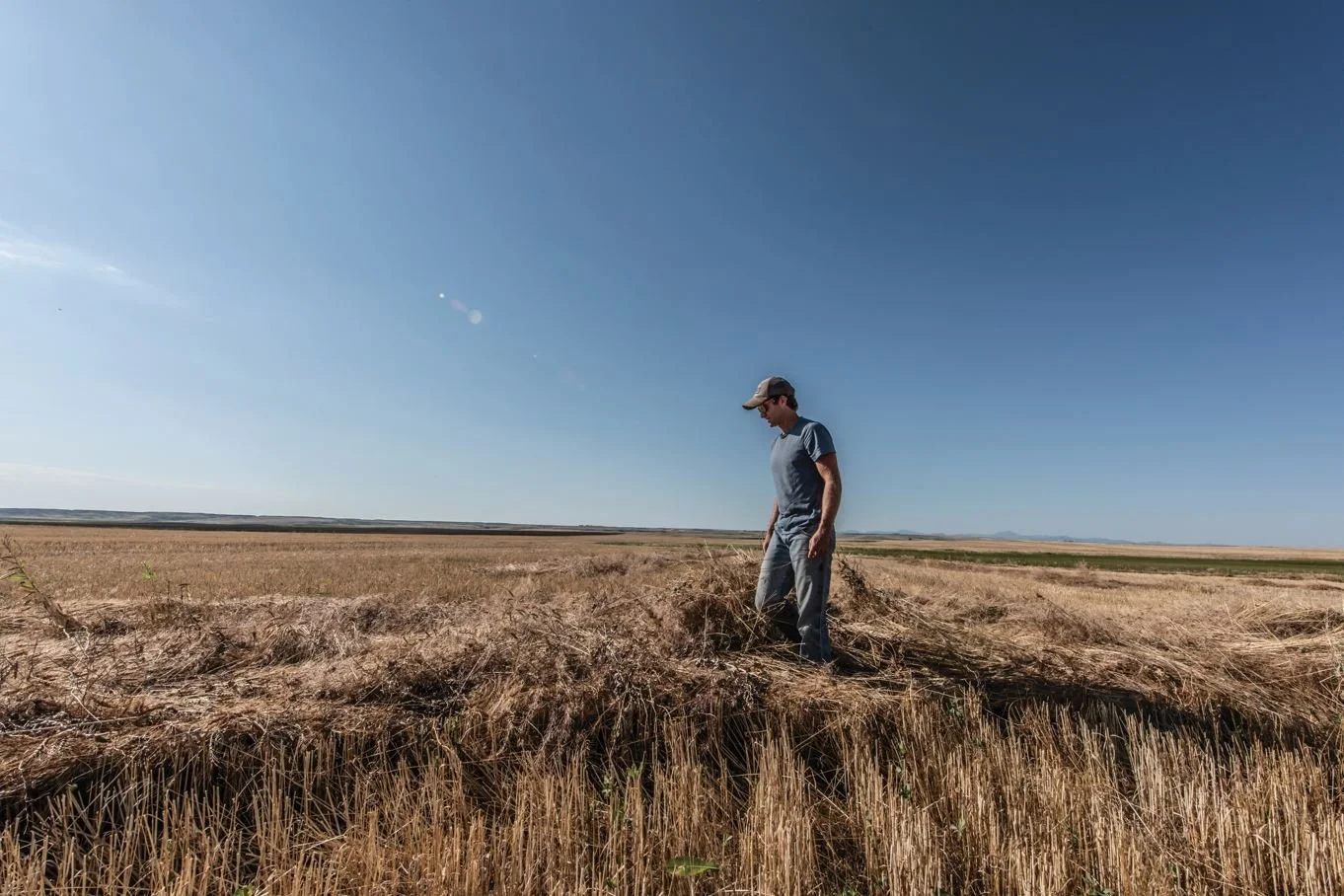Eat the Amazon
Venezuelan chef Enrique Limardo looks home and to the jungle at Alma Cocina Latina.
Amazonian Pantry at Alma Cucina Latina | Photos: Antoinette Bruno
“I would love to use tarantula, but I tried it—twice— and people freaked out,” says Enrique Limardo, a Venezuelan-born and -trained chef cooking in Baltimore. In his kitchen at Alma Cocina Latina, Limardo stocks his pantry with Amazonian ingredients and applies modern techniques and presentations for an experience unlike any other in the city (and likely the country).
“It’s in our [Venezuelan] DNA,” says Limardo. “We have the Caribbean and a big chunk of the Amazon. I try to put those cultures together in my cooking.”
With support from Alma Owner Irena Stein (who definitely does not return from trips to Venezuela with suitcases overstuffed with product), Limardo has slowly and thoughtfully introduced patrons to foods that indigenous peoples have used resourcefully for generations. “We strive to say something important to the world through our food,” says Stein.
They source pantry staples via the Instituto Culinario de Investigación Amazonas (@iciaamazonas) in the Amazonas, the southernmost state in Venezuela, where the highest proportion of the nation’s indigenous peoples live, including many farmers. The Amazonas Culinary Research Institute was founded by chef, pioneer, and proponent of New Amazonian Cuisine Nelson Méndez to preserve the cultures of the Amazon, educate consumers, and train indigenous communities. The institute includes a cooking school and teaches farmers how to apply technology to harvesting, packaging, and selling wild products. By cooking and eating Amazonian, chefs and their guests can help support an entire economic ecosystem in indigenous communities—in a country already struggling with crippling economic instability—and preserve the means of production: the Amazon rainforest.
Through the institute, Amazonian products cultivated and processed by indigenous farmers and their communities are making it to markets in Venezuela, where Limardo sources his ingredients and makes special orders. A distribution network has yet to reach the United States. But as support for and interest in Amazonian ingredients (mainly insects and plants or plant-based products) increases in the U.S., that will hopefully change. Here are five essential ingredients that Limardo sources from ICIA. slowly and thoughtfully introduced patrons to foods that indigenous peoples have used resourcefully for generations. “We strive to say something important to the world through our food,” says Stein. They source pantry staples via the Instituto Culinario de Investigación Amazonas (@iciaamazonas) in the Amazonas, the southernmost state in Venezuela, where the highest proportion of the nation’s indigenous peoples live, including many farmers. The Amazonas Culinary communities are making it to markets in Venezuela, where Limardo sources his ingredients and makes special orders. A distribution network has yet to reach the United States. But as support for and interest in Amazonian ingredients (mainly insects and plants or plant-based products) increases in the U.S., that will hopefully change.
Pork Shank Osso Buco, Mashed Potatoes, Chanterelle-Cacao Purée, Fried Egg, and Pork Jus
Chef Enrique Limardo of Alma Cocina Latina
Crispy Spanish Octopus, Taro Root Purée, Hearts of Palm Emulsion, Chipotle-Pine Nut Vinaigrette, Avocado, Pickled Pineapple, and Cilantro Powder
Here are five essential ingredients that Limardo sources from ICIA
Lemon Ants
Flavor: Intensely citrusy, almost like a lemon
Use: Limardo uses ants in stocks and syrups. He makes a sweet plantain purée infused with lemon ant syrup that guests are sure has lemon in it until Limardo shows them the ants. “They don’t believe it. They love ants!”
Termitas (Termites)
Flavor: A little sour and very earthy, complex, with notes of chocolate, blue cheese, and unpopped popcorn kernels
Use: Limardo gets them live and freezes them, defrosts them, and then steams the termitas 10 to 15 minutes before dehydrating them and grinding the bugs into a powder. He seasons meat and fish with the termite powder and also mixes it with Maldon sea salt to finish plates.
Copoazú (Amazonian Cacao)
Flavor: Similar to the other cacao but more sour and intense, almost with a smoky, barbecue note and fermented tang
Use: Limardo extracts the white pulp and cooks it sous vide before blending it into sauces, as with a tamarind sauce reminiscent of barbecue sauce.
Termitas
Termitas
Mañoco (Cassava Flour)
Flavor: Slightly sweet, starchy, and earthy—similar to cornmeal in texture
Use: Limardo cooks a mañoco polenta. He toasts it in the pan first, adds fat followed by vegetable stock, and stirs to a supremely creamy texture.
Guayaba Arazá (Amazonian Guava)
Flavor: Similar to the other guava but super sour, even when dried
Use: Limardo makes a kombucha and vinegar with the guava, using the latter to cure seafood, such as salmon, shrimp, and langoustines.
Termitas (Termites)
Flavor: A little sour and very earthy, complex, with notes of chocolate, blue cheese, and unpopped popcorn kernels
Use: Limardo gets them live and freezes them, defrosts them, and then steams the termitas 10 to 15 minutes before dehydrating them and grinding the bugs into a powder. He seasons meat and fish with the termite powder and also mixes it with Maldon sea salt to finish plates.












